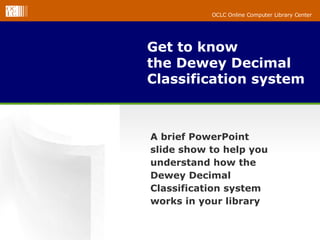Denunciar
Compartilhar

Recomendados
Mais conteúdo relacionado
Semelhante a Adults Tutorial 0606
Semelhante a Adults Tutorial 0606 (20)
Último
Último (20)
Strategies for Landing an Oracle DBA Job as a Fresher

Strategies for Landing an Oracle DBA Job as a Fresher
EMPOWERMENT TECHNOLOGY GRADE 11 QUARTER 2 REVIEWER

EMPOWERMENT TECHNOLOGY GRADE 11 QUARTER 2 REVIEWER
Apidays New York 2024 - Passkeys: Developing APIs to enable passwordless auth...

Apidays New York 2024 - Passkeys: Developing APIs to enable passwordless auth...
Web Form Automation for Bonterra Impact Management (fka Social Solutions Apri...

Web Form Automation for Bonterra Impact Management (fka Social Solutions Apri...
Vector Search -An Introduction in Oracle Database 23ai.pptx

Vector Search -An Introduction in Oracle Database 23ai.pptx
ProductAnonymous-April2024-WinProductDiscovery-MelissaKlemke

ProductAnonymous-April2024-WinProductDiscovery-MelissaKlemke
"I see eyes in my soup": How Delivery Hero implemented the safety system for ...

"I see eyes in my soup": How Delivery Hero implemented the safety system for ...
Modular Monolith - a Practical Alternative to Microservices @ Devoxx UK 2024

Modular Monolith - a Practical Alternative to Microservices @ Devoxx UK 2024
Cloud Frontiers: A Deep Dive into Serverless Spatial Data and FME

Cloud Frontiers: A Deep Dive into Serverless Spatial Data and FME
Elevate Developer Efficiency & build GenAI Application with Amazon Q

Elevate Developer Efficiency & build GenAI Application with Amazon Q
Connector Corner: Accelerate revenue generation using UiPath API-centric busi...

Connector Corner: Accelerate revenue generation using UiPath API-centric busi...
Six Myths about Ontologies: The Basics of Formal Ontology

Six Myths about Ontologies: The Basics of Formal Ontology
Apidays New York 2024 - APIs in 2030: The Risk of Technological Sleepwalk by ...

Apidays New York 2024 - APIs in 2030: The Risk of Technological Sleepwalk by ...
How to Troubleshoot Apps for the Modern Connected Worker

How to Troubleshoot Apps for the Modern Connected Worker
TrustArc Webinar - Unlock the Power of AI-Driven Data Discovery

TrustArc Webinar - Unlock the Power of AI-Driven Data Discovery
Apidays New York 2024 - The value of a flexible API Management solution for O...

Apidays New York 2024 - The value of a flexible API Management solution for O...
Adults Tutorial 0606
- 1. Get to know the Dewey Decimal Classification system A brief PowerPoint slide show to help you understand how the Dewey Decimal Classification system works in your library
- 2. Get to know the DDC Have you ever gone to the library and wondered how to find the books you want?
- 3. Did you know that your library has a great way of organizing its books so that you can find them easily? Get to know the DDC
- 4. It’s called the Dewey Decimal Classification system—or DDC . This system got its name from Melvil Dewey (1851-1931), who introduced his great idea for organizing library collections in 1876. Melvil Dewey Get to know the DDC
- 5. With its structure and flexibility, the DDC has served libraries for over 130 years so far and has spread to more than 200,000 libraries in 135 countries around the world. Get to know the DDC
- 6. But how does the DDC benefit you? Very simply, the DDC is an organizational tool that makes it easy for you to find the books and other materials you want. Get to know the DDC
- 7. So what does the DDC do? It helps solve a big problem: helping you find the right information by giving you a specific number that belongs to the item you want. Get to know the DDC
- 11. Once you have the number for the book you need, you can go find the row of books where the book you want should be. Get to know the DDC The books on each shelf are arranged in number order, but if you need help, someone who works at the library can help you.
- 12. You will probably notice that when you find a specific book, other books shelved around it are usually books on a similar topic. Get to know the DDC That’s how the DDC is arranged—by topic. The DDC has lots of topics— thousands of them!
- 13. The topics in the DDC are arranged into ten main classes: 500 Science 600 Technology 700 Arts & recreation 800 Literature 900 History & geography 000 Computer science, information & general works 100 Philosophy & psychology 200 Religion 300 Social sciences 400 Language Get to know the DDC
- 15. Each division is then divided into ten sections, like this: 790 Recreational & performing arts 791 Public performances 792 Stage presentations 793 Indoor games & amusements 794 Indoor games of skill 795 Games of chance 796 Athletic & outdoor sports & games 797 Aquatic & air sports 798 Equestrian sports & animal racing 799 Fishing, hunting & shooting Get to know the DDC
- 19. Once you get to know the DDC, you’ll have a much better idea about where you’ll find the books and other items you need in your library—and in other libraries that use the DDC. Get to know the DDC
- 20. Melvil Dewey had a great idea in 1876 that helps library users like you today. You can count on his idea, the DDC, to help you find the information you need in your library. Melvil Dewey Get to know the DDC